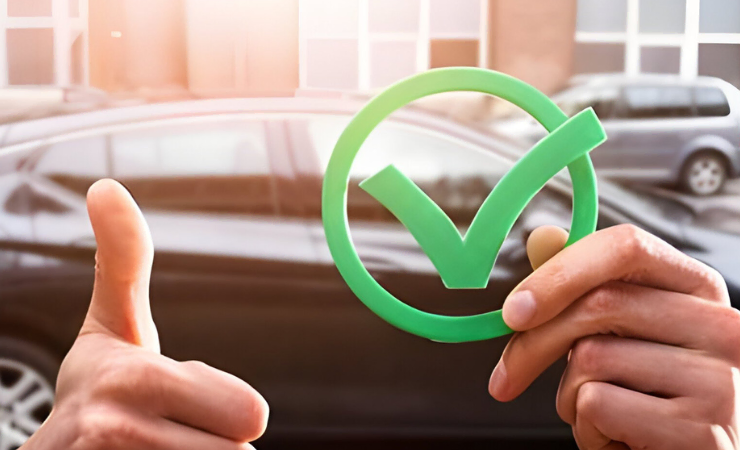The MOT test is an annual roadworthiness certification required for most vehicles in the UK once they turn 3 years old. However, certain vehicles may be exempt from the requirement to pass an MOT test each year. This article provides a detailed overview of MOT exemptions, including what vehicles qualify, how owners can declare an exemption, and what responsibilities still apply for keeping exempt vehicles safe and roadworthy.
Brief Overview of MOT Exemptions
The most common MOT exemption applies to vehicles over 40 years old that the owner has declared as being of historical interest, provided they have not been substantially modified. However, some large goods vehicles manufactured before 1960 are also exempt, as are all steam-powered vehicles regardless of age.

Vehicles over 40 years old can avoid the annual MOT test if registered with the DVLA as being of historical interest. Owners must declare that exempt vehicles have not been substantially changed in ways that alter their original design and characteristics.
You might be interested: Different Classes of MOT Tests
What Vehicles Qualify for MOT Exemption?
There are three main types of MOT exemptions Source:
- 40-year rolling exemption for vehicles of historical interest (VHI)
- Vehicle must be over 40 years old based on manufacture date
- The exemption date rolls forward on April 1st of each year
- Pre-1960 goods vehicle exemption
- Certain large goods vehicles built before 1960 are MOT exempt
- Steam-powered vehicle exemption
- All steam-powered vehicles are fully MOT-exempt regardless of age
- Exemptions do not apply to vehicles with a Q registration prefix
Additional Rules and Guidance on Exempt Vehicle Criteria
- Vehicle age is determined based on when the vehicle was manufactured, not when it was first registered
- Changes or modifications to a vehicle can affect exemption eligibility
- Modifications must not “substantially change” the original specification
- Interpretation allows for some minor modern upgrades (e.g., safety belts)
- Special rules for imported foreign vehicles
- Must provide evidence of age and registration
How to Declare a Vehicle of Historic Interest for MOT Exemption
To register an eligible vehicle for a 40-year rolling MOT exemption, owners must make a declaration to the DVLA:
- UK registered vehicles: Complete form V112
- Foreign registered vehicles: Complete form V112G
- The declaration confirms that the vehicle meets the exemption criteria
- Primarily based on age and extent of modifications
- Owners must re-declare every year to retain the exemption
This declaration is essential for qualifying vehicles to become officially MOT-exempt each year.
Important Notes on the Exemption Declaration Process
- Exemption takes effect from the next MOT due date after the declaration is processed
- The declaration requires confirming that the vehicle has not undergone “substantial changes.”
- Subjective assessment with limited formal guidance
- Changes to original parts, technology, and design should be avoided
- Cosmetic changes like paint colour or minor upgrades like safety belts generally allowed
Maintaining Roadworthiness of MOT-Exempt Vehicles
Although MOT-exempt, owners must still ensure their vehicles remain roadworthy and safe to drive. Recommended steps include:
- Follow the vehicle manufacturer’s service schedule
- Perform regular safety checks before driving
- e.g. lights, tyre tread depth, fluid levels
- Consider an annual voluntary MOT test for peace of mind
- Seek guidance from classic car clubs and experts
| Component | Sample Safety Checks |
| Brakes | Check brake fluid, assess brake pad wear |
| Lights | Test all lights are working using a helper |
| Tyres | Check tread depth is above 1.6mm, look for cracks/damage |
Failing to maintain an MOT-exempt vehicle could still result in fines or penalty points if stopped by police.
Statistics and Impact of MOT Exemptions
Key statistics related to MOT-exempt vehicles:
- Over 500,000 vehicles currently qualify for MOT exemption
- The majority of classic cars plus some buses, goods vehicles
- Exempt vehicles represent less than 1% of the total UK fleet
- Limited evidence that exemptions have impacted road safety
- Accident rates comparable to tested vehicles
- Owners tend to maintain exempt vehicles well
However, a small minority of exemption holders do not keep vehicles in roadworthy condition, hence the need for recommended voluntary actions.
Insurance Implications
- Standard insurance policies remain valid for MOT-exempt cars
- Some insurers may require declarations confirming the following:
- The vehicle meets age/type exemption criteria
- Owner commits to maintaining roadworthiness
- Specialist classic car insurance is not required unless desired
International Comparisons
Approaches towards roadworthiness testing of historic vehicles vary internationally:
- UK – rolling 40+ year MOT exemptions
- Germany – regular testing is required for all vehicles
- France – testing waived for some low-annual mileage classics
Most countries try to balance the preservation of automotive heritage with road safety.
The 40-year rolling MOT exemption helps preserve vintage cars and motorcycles as part of Britain’s motoring heritage. However, owners must take responsibility for ensuring exempt vehicles remain roadworthy through regular maintenance and checks. Following best practice guidelines from industry experts can help strike the right balance.
